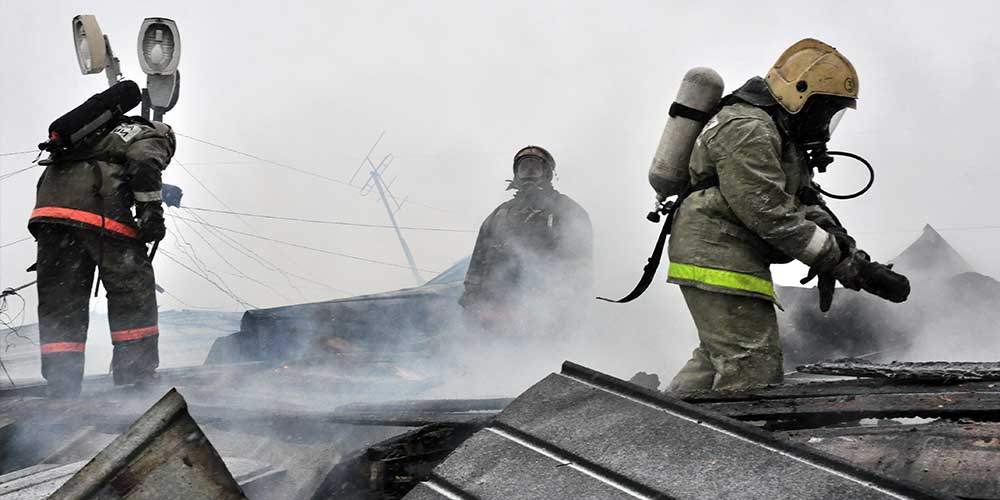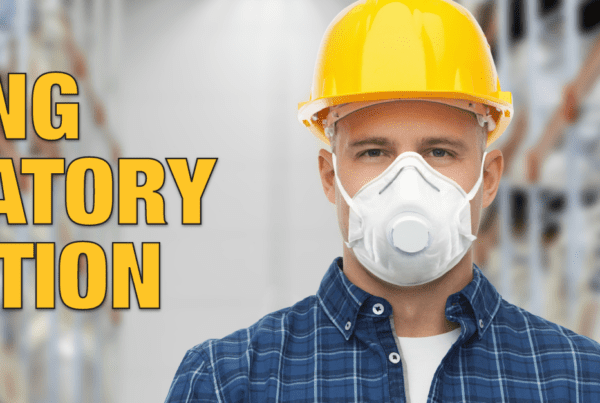Dangerous Times, Dangerous Goods
This year has seen environmental disasters that have put millions of people at risk. From the incredible one-two-three punch of Hurricanes Harvey, Irma and Maria, to the Bangladesh floods, to the recent earthquake in Mexico, we see people facing lack of food, clean water and shelter. All of us need to protect ourselves and our loved ones during these periods when outside help hasn’t arrived. But while we’re watching out for what Mother Nature can throw at us, we must also remember hazardous chemicals and articles, even those that can help us survive, can put us in danger as well.
How to Prepare for Natural Emergencies
What does a typical household need to prepare for natural emergencies (or even man-made ones such as chemical spills that can isolate and endanger communities)? A number of websites list “must haves” and “should haves” for these situations, including:
- Government of Canada Get Prepared and Get Prepared Video
- U.S. Build an Emergency Kit
- U.S. Red Cross Emergency Check List
- U.S. Centers for Disease Control (CDC) CDC Family Emergency Checklist
What are some of the hazards that our own preparations can create?
One of the biggest dangers during emergencies is generators. These internal-combustion power sources can be lifesaving, especially for those with special health needs, and can make life during power outages more bearable. But they function by burning fuel, which can lead to carbon monoxide poisoning if the generations are not kept outside and away from air intakes.
Between 1999 and 2012, the U.S. Consumer Product Safety Commission (CPSC) reported a staggering 800 deaths from carbon monoxide poisoning involving generators. The CDC lists the following safety advice for those using generators or other fuel-burning equipment during emergencies in a CDC Generator Guidelines:
- Don’t use a generator, charcoal grill, camp stove, or other gasoline or charcoal-burning device inside your home, basement, or garage or near a window.
- Don’t run a car or truck inside a garage attached to your house, even if you leave the door open.
- Don’t burn anything in a stove or fireplace that isn’t vented.
- Don’t heat your house with a gas oven.
According to Travelers Insurance, you should never run a generator less than 25 feet from any window, door or air vent, and never run a generator in a garage, even with the door open. (Their Travelers Insurance Tips on Generators has further tips for safe use of generators).
Remember that your home should be equipped with battery-powered carbon monoxide detectors. Even if the power is off, these devices should give you warning if carbon monoxide is building up in your living space.
Batteries
Speaking of batteries – most lists of emergency equipment include various devices that run on rechargeable batteries, which nowadays are usually some form of lithium battery. Lithium batteries can be literal lifesavers when they allow you to call for help on a cellphone or listen for emergency instructions on a radio, but they are also fire hazards in their own right.
Some tips for lithium battery safety include:
- Purchase batteries from reliable suppliers. Those cheap batteries on a sketchy website may not be manufactured to the exacting specifications of legitimate batteries.
- Do not allow lithium batteries to get wet (particularly the non-rechargeable lithium metal type). Lithium metal is a water-reactive chemical, classified as Division 4.3 in the dangerous goods/hazardous materials system.
- Lithium batteries may also catch fire if they are crushed or otherwise damaged. Replace any lithium batteries you think may have been damaged as soon as possible.
- When equipment is charging or operating, watch for overheating. Equipment such as laptops that use vents to cool the battery should not be used on bedding or other materials that could block the airflow to the vents.
- Do not leave batteries in extremely hot areas (such as next to a hot stove) or in direct sunlight.
Note that you can now purchase solar-powered chargers for consumer electronics such as cellphones. These may be good to include in your emergency kit in areas that can be hit with prolonged power outages.
Safe Food & Water
Of course, the biggest concern most people will have during a natural catastrophe will be safe food and water. Always discard frozen food that has thawed during a power outage – never refreeze it if all ice crystals have melted, or eat it if it has reached temperatures outside “refrigerator cold”. Throw out any food that looks or smells “off.” And of course, if you stock canned goods for your emergency supplies, make sure you have a manual can opener on hand. Yes, cans may be forced open with other sharp objects in a pinch, but this can lead to serious injury if you’re not extremely careful, and a deep gash is going to make your emergency just that much worse.
Most authorities recommend that you store at least one gallon of water per person for a three-day period. This should cover drinking water and essential sanitation. Don’t forget to count your pets; they need to drink as well. If you’ve stocked dehydrated food (always a good plan), include enough water to prepare them.
It’s recommended that you store the water in non-corrodible containers such as plastic or glass – if you buy the large plastic water bottles, just leave them in their containers. Remember, though, that water may go stale or even start to grow bacteria after storage of more than six months or so, so it’s a good idea to replace your emergency stores at least twice a year.
But what if the emergency outlasts your water supply0 FEMA reminds us that although contaminated water can lead to illnesses such as dysentery or hepatitis, dehydration can be worse. They suggest:
“Drink water that you know is not contaminated first. If necessary, suspicious water, such as cloudy water from regular faucets or water from streams or ponds, can be used after it has been treated. If water treatment is not possible, put off drinking suspicious water as long as possible, but do not become dehydrated.”
Fortunately, there are ways to ensure your water is not contaminated with disease organisms. Boiling is the usual standard, but this may not be possible if the power is out. Household bleach can be used to treat drinking water, by adding 16 drops (1/8 teaspoon) per gallon of water. The water should be stirred and let stand for at least 30 minutes to allow the bleach to do its work. Water purification tablets can be purchased where hunting or camping supplies are sold. However, it’s recommended not to use those which use ingredients other than sodium hypochlorite (the chemical in bleach), or which use the hypochlorite at concentrations outside the 5.25 – 6.0 per cent range.
Of course, remember to store bleach or hypochlorite agents away from other household cleansers, such as ammonia-based products. Mixing these will generate toxic gases that can be potentially lethal in enclosed areas. Also, do not use unapproved cleaning compounds for disinfecting water or food. Bleach is known to be safe in low concentrations, but other cleaning chemicals can be toxic or corrosive. Even bleach solution or hypochlorite tablets must be kept out of the reach of small children and pets.
Other Things to Keep in Mind
Other hazardous materials in emergency kits can include flares, matches, first-aid supplies and fire extinguishers. Know how to store and use them properly before the emergency hits.
Finally, many people want to send aid to stricken areas. But if you’re putting together emergency supplies for transport, remember that the regulations on transporting hazardous materials still apply. Don’t ship dangerous goods such as flammables, toxics, corrosives, or compressed gases without following the rules for packaging and identifying them. Don’t forget that battery-powered equipment and equipment containing fuels such as gasoline or propane are hazardous materials, and must be handled as such. If you’re not sure how to go about it, check with your carrier or local Department of Transportation or Transport Canada division for advice.
Of course, we always hope these preparations won’t be needed. But when they are, keep chemical safety in mind. Some of the biggest hazards in emergencies may be those we create ourselves.
Do you have other questions about emergency safety or how to ship emergency supplies? Our regulatory staff here at ICC The Compliance Center at 1-888-442-9628 (USA) or 1-888-977-4483 (Canada) can assist you.







 ICC USA
ICC USA ICC Canada
ICC Canada